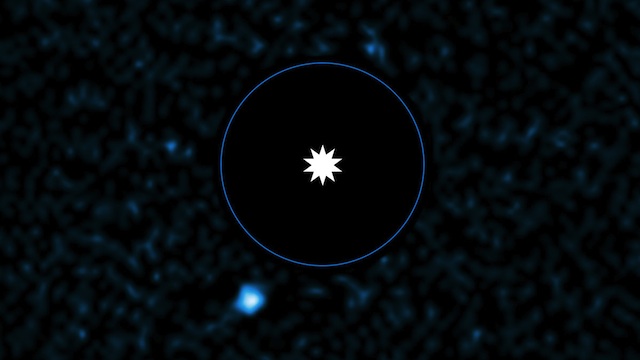SUMMARY
This is AI generated summarization, which may have errors. For context, always refer to the full article.

PARIS, France – Breaking new ground in the detection of planets beyond our solar system, European astronomers on Monday, June 3, said they had recorded the most lightweight world to be discovered so far through direct observation.
Hundreds of extra-solar planets have been found since 1995, but almost all of them have been discovered through inference — by the way their gravitational pull affects their star’s light or the star itself.
The new discovery is a gas giant about four to five times the mass of Jupiter, the largest planet of our solar system, the European Southern Observatory (ESO) said.
It orbits a young star, HD 95086, at around 56 times the distance between the Earth and the Sun.
“Direct imaging of planets is an extremely challenging technique that requires the most advanced instruments, whether ground-based or in space,” said lead investigator Julien Rameau of France’s Institute of Planetology and Astrophysics in Grenoble (IPAG).
“Only a few planets have been directly observed so far, making every single discovery an important milestone on the road to understanding giant planets and how they form.”
A total of 720 extrasolar planets have been found since the first was spotted in 1995, according to a toll compiled by the website http://exoplanets.org. Another 2,595 findings by the specialist Kepler orbital telescope await confirmation.
All but a dozen have been detected indirectly, either through alterations in starlight or through a wobble in a star’s motion, caused by the gravitational tug of a passing planet as it swings by.
The new sighting, called HD 95086b, has the lowest mass of any directly observed exoplanet, the astronomers said.
“The less mass that a planet has, the harder it is to observe it,” explained team member Anne-Marie Lagrange.
Astronomers used an adaptive optics instrument — a gadget designed to remove blur caused by Earth’s atmosphere — mounted on one of the gigantic 8.2-metre (27-foot) units at ESO’s Very Large Telescope (VLT) in Chile’s Atacama desert.
The observations were made using infrared light and a technique called differential imaging, which improves the image contrast between the planet and host star.
So far, no exoplanet spotted has the potential to be a home away from home — a rocky planet that orbits in a balmy zone, enabling water to exist in liquid form and thus nurture life as we know it.
The new study is to be published in the Astrophysical Journal Letters. – Rappler.com
Add a comment
How does this make you feel?
There are no comments yet. Add your comment to start the conversation.